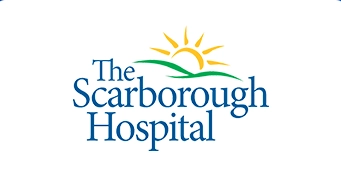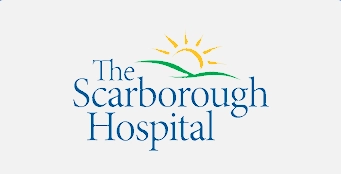The Scarborough Hospital saves over $50,000 with its first application of simulation using Simul8

- Industry
- Healthcare
- Location
- England
- Goals
- Validate and implement improvement scenarios for hospital portering services
Achievements with Simul8
-
-
Identified more than $50,000 in cost savings per annum
-
-
Exceeded patient transportation improvement target at the General campus by 36%
-
-
Exceeded patient transportation improvement target at the Birchmount campus by 90%
Scarborough hospital portering service validation and improvement with Simul8
Situated in one of the most diverse communities in Canada, The Scarborough Hospital (TSH) has delivered a broad spectrum of services to the Scarborough community from its two hospital campuses, Birchmount and General, as well as five community satellite sites for a combined 90 years (60 years at the General campus and 30 years at their Birchmount campus).
Applying Simul8’s simulation software to validate and implement improvement scenarios for hospital portering services, TSH has reduced patient transportation turnaround times and delivered annual cost savings of more than $50,000.


"Simul8’s visuals allowed the simulation I built to be easily communicated and understood by stakeholders who were not fluent in 'simulation' language. Because of the friendly user interface, helpful information available online, and the visuals, I would not hesitate to recommend Simul8 to others."
Improvement Facilitator, The Scarborough Hospital

Rising to the challenge of changing healthcare needs
Healthcare is rapidly developing: the needs of patients, families, and the system of care itself are constantly shifting. Evolving to meet these needs is integral to The Scarborough Hospital’s commitment to continue to deliver high-quality, compassionate care.
To achieve this vision, TSH has implemented a strategic plan around four key commitments:
- We will work closely with the people we serve to continually improve what we do and how we do it.
- Working with other service providers – the partners who also provide care – we will deliver those programs and services in more coordinated and responsive ways.
- Within our own team, we will keep developing leading programs and services to better serve the needs of our community.
- We will focus relentlessly on excellence and draw on the best ideas, so that everything we do continually strengthens a healthy hospital and a healthy community.
Reinforcing these commitments are four strategic directions focusing the hospital over the next four years:
Patients as Partners: We will engage patients and families in a meaningful way to enhance their experience, promote shared care, and improve quality of care.
Innovation and Learning: We will enhance our team’s capacity for advanced learning, innovation, and creativity.
Integrated Care Networks: We will collaborate with other service providers, patients, and their families to co-design accessible and coordinated services.
Quality and Sustainability: We will deliver quality and sustainable services by designing and adopting evidence-based practices.
Achieving high-quality, compassionate care through technology, innovation and research
To enable progress on these directions and commitments, TSH has developed a strong culture of collaboration and innovation; investing in research, technology and education through an affiliation with the University of Toronto.
Such investment in academic collaboration and quality improvement has recently lead to the hospital's successful first application of healthcare simulation software with Simul8.
Using a simulation model developed by Carly Henshaw, Improvement Facilitator at TSH and an Industrial Engineering graduate from the University of Toronto, TSH has not only improved patient transportation department turnaround times, but also identified more than $50,000 per annum in cost savings by validating that the hiring of additional staff was not necessary.
With hospital porters playing an essential role in enabling care to run efficiently through the transportation of people, equipment and supplies, these improvements also had a positive impact on patient safety and service satisfaction.
Testing improvement scenarios with Simul8
The simulation model established how the various improvement scenarios would affect the key performance indicator of turnaround times - the time measured between when a transport request is made and when it is completed.
The scenarios which were evaluated with the goal of reducing the gap between current performance and target, without effecting patient safety, included:
- Reduce the number of two porter tasks by 50%
- Reduce patient turnaround time by one, two, and three minutes
- Add eight hour and four hour shifts on weekdays and weekends
- Eliminate off hour item requests
- Move soiled linen pickup earlier in the day
- Alter start times of existing shifts
- Reduce item requests by 50%
- Introduce two 30 minute breaks
What are the benefits?
When the project began in 2015, turnaround time of a patient transportation was 47 minutes at the General campus, with a target of 40 minutes and 36 minutes at the Birchmount campus, with a target of 35 minutes.
General Campus Results
At the General campus, the simulation established that reducing the number of two-porter tasks by 50% would produce the largest impact. Doing so would cut turnaround time by approximately 11 minutes, exceeding the initial reduction target for this campus by 36%.
Methods developed and implemented by TSH to reduce the number of two-porter tasks included:
- Dedicating one porter and team attendant to work as a team in the Nephrology department where there are high demands for bed transports.
- Informing the Intensive Care Unit (ICU) that patients should be transported by stretcher when possible (stretcher transports only require one porter).
Understanding why intra unit transports occur
By reducing the number of two porter tasks by 50%, as opposed to implementing other improvements, which added an additional resource during day time hours, TSH delivered substantial savings of $51,750 from potential additional hiring costs.
Birchmount campus results
At the Birchmount campus, the improvement scenario that had the highest impact on turnaround times was reducing the average turnaround time by three minutes, which was achieved by minimizing delays and time searching for equipment.
By implementing these solutions at the hospital, there was an improvement of almost 10 minutes in overall turnaround time – exceeding the Birchmount campus reduction target by 90%.
Patient transport managers at the hospital are now working with other departments to determine where most transport delays occur and have implemented daily checks of equipment to ensure there is enough available for staff.
Learn more about Simul8 for healthcare process improvement
Find out more about how simulation is used by healthcare organizations, read more case studies and access a range of learning resources.
Learn more